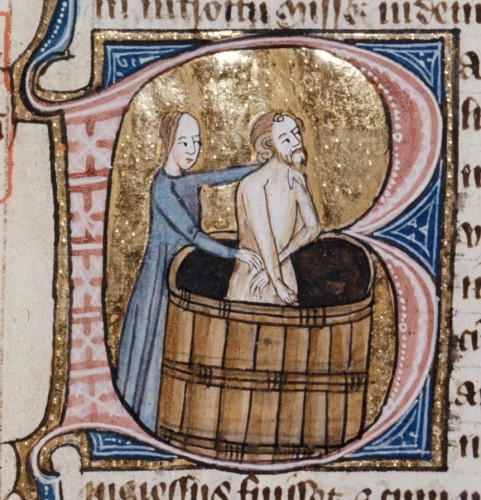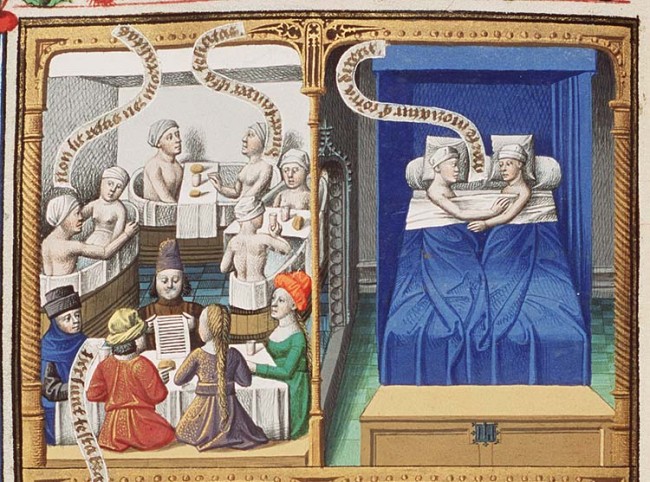Hwen Hoshino wrote:
Yep, i missed that movie because nobody on the train station knew which train was supposed to be going...

Hwen Hoshino wrote:
Yep, i missed that movie because nobody on the train station knew which train was supposed to be going...


Beside Christian belief what else culturally separated the Viking warrior from the English, French, etc? of the 11th/12th century?Hastur wrote:The Vikings didn't have Knights. That was more or less an invention of their heirs, the Normans, who paired the Norse warrior tradition with the feudal doctrines of France.de officiis wrote:I would defer to Hastur.Hwen Hoshino wrote:What was the most prestige warrior class at that time? Knights or axe wielding footsoldiers?
Vikings preferred to fight on foot but could ride to the battle. Viking horses were small and sturdy like the Icelandic horses of today.
They fought with axes, swords and spears. They mixed the weapons in their fighting formations since they had different functions. The axe was better at penetrating armor and shields but the awkward balance could make the wielder vulnerable so he might fight by the side of a swordsman or spearman that could help cover him with his shield.
Warrior prestige was determined by reputation standing and wealth. Someone who was fighting for a big chieftain and could afford good gear was above someone more provincial but from the sagas we can learn that reputation and prestige was extremely important.
The goal of the Viking warrior was to become famous and die well so that he would go to Valhalla and feast with Odin till Ragnarök.
By Viking, I assume you mean Norsemen or Scandinavians. Norway got christened in 1030. Also, there's differences between the Norwegian, Danish and Swedish warrior class at this point. Denmark followed European feudalism, and Sweden followed suit quickly, so they would all get knights, and lots of poor peasants to knock about. Feudalism never took hold in Norway. Except for those pesky Swedish and Danish aristocratic meddlers.GloryofGreece wrote: Beside Christian belief what else culturally separated the Viking warrior from the English, French, etc? of the 11th/12th century?
If Feudalism didn't really take hold in Norway, what was their society structured around in the Middle Ages? Was it better to be a farmer/peasant there than England for example?Otern wrote:By Viking, I assume you mean Norsemen or Scandinavians. Norway got christened in 1030. Also, there's differences between the Norwegian, Danish and Swedish warrior class at this point. Denmark followed European feudalism, and Sweden followed suit quickly, so they would all get knights, and lots of poor peasants to knock about. Feudalism never took hold in Norway. Except for those pesky Swedish and Danish aristocratic meddlers.GloryofGreece wrote: Beside Christian belief what else culturally separated the Viking warrior from the English, French, etc? of the 11th/12th century?

Wasn't everyone filthy?Speaker to Animals wrote:By the high middle ages, the Scandinavians were totally Christianized and civilized. Their knights were among the best of the crusades too. They had some success in crushing the filthy Finns as well.
Hwen Hoshino wrote:Wasn't everyone filthy?Speaker to Animals wrote:By the high middle ages, the Scandinavians were totally Christianized and civilized. Their knights were among the best of the crusades too. They had some success in crushing the filthy Finns as well.


http://www.medievalists.net/2013/04/did ... ake-baths/Public bathhouses were very popular throughout medieval Europe but they also raised controversy as some objected to the fact that men and women could see and be with each other naked, and that this could lead to illicit sex. A thirteenth century church writer made this prohibition: “Hast thou washed thyself in the bath with thy wife and other women and seen them nude, and they thee? If thou hast, thou shouldst fast for three days on bread and water.”
However, it seems that church officials had little influence on bathhouses in the Middle Ages. Medieval people, in fact, seems to have accepted that the bathhouse was not only a place to get clean and healthy, but it could also be a place where sex and prostitution could occur. The bathhouses in Southwark were called the Stews, and were largely seen to be just fronts for brothels. These practices were usually overlooked by local authorities, who believed that it was best to allow some level of sexual outlets for its young men, otherwise risk more serious problems.

Most people could not read. i don't see it much darker than the 18th century, but come on.Speaker to Animals wrote:But, seriously, this idea that the medieval period was a time of backwardness and darkness is just a pernicious myth. It actually was a time of great progress and innovation.
And another thing, after the black death hit, hygiene and cleanliness standards were codified into law. You would get fined for not keeping your domicile clean, for example. People began to think that disease was spread by foul odors, and all sources of them were identified as health threats.
I don't know how to prove this, but I suspect there was a period between the last black death outbreak (1600s) and the 19th century when hygiene standards declined as the threat of disease subsided a little.